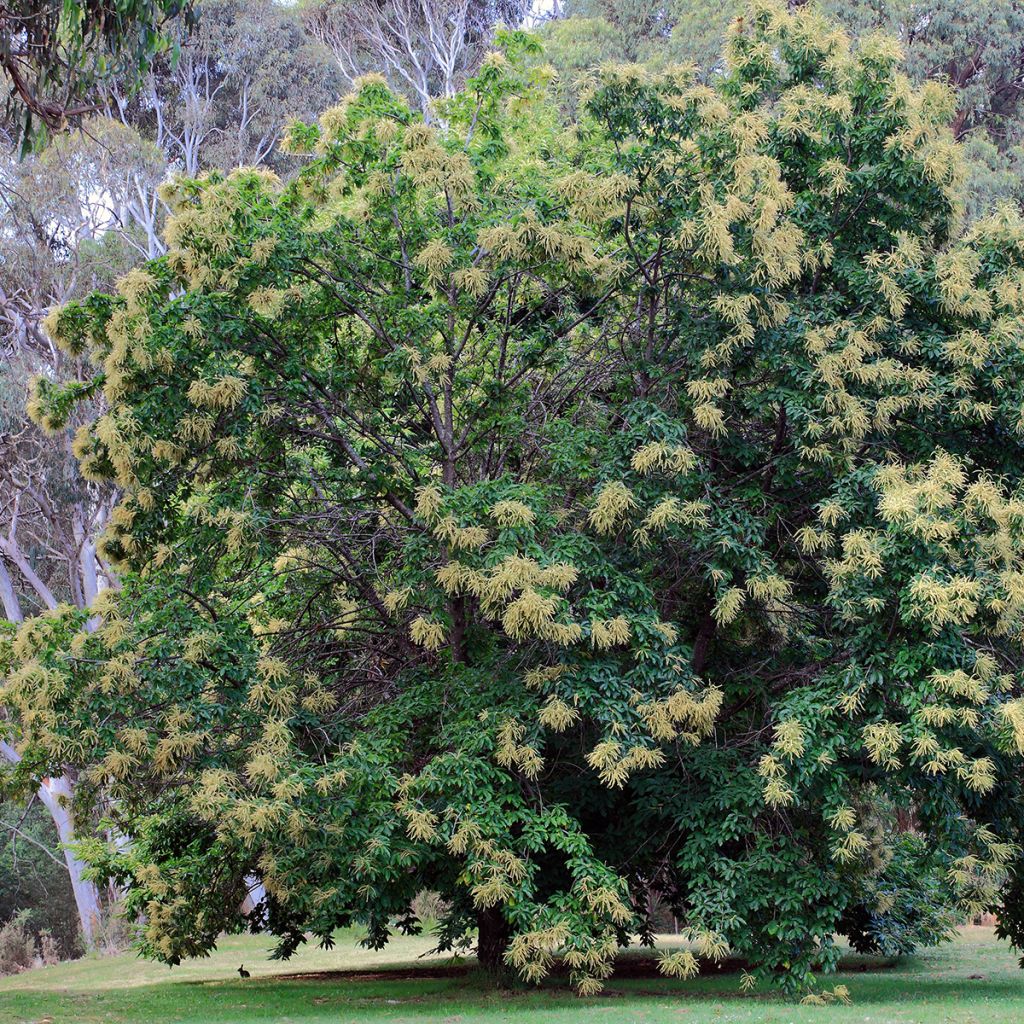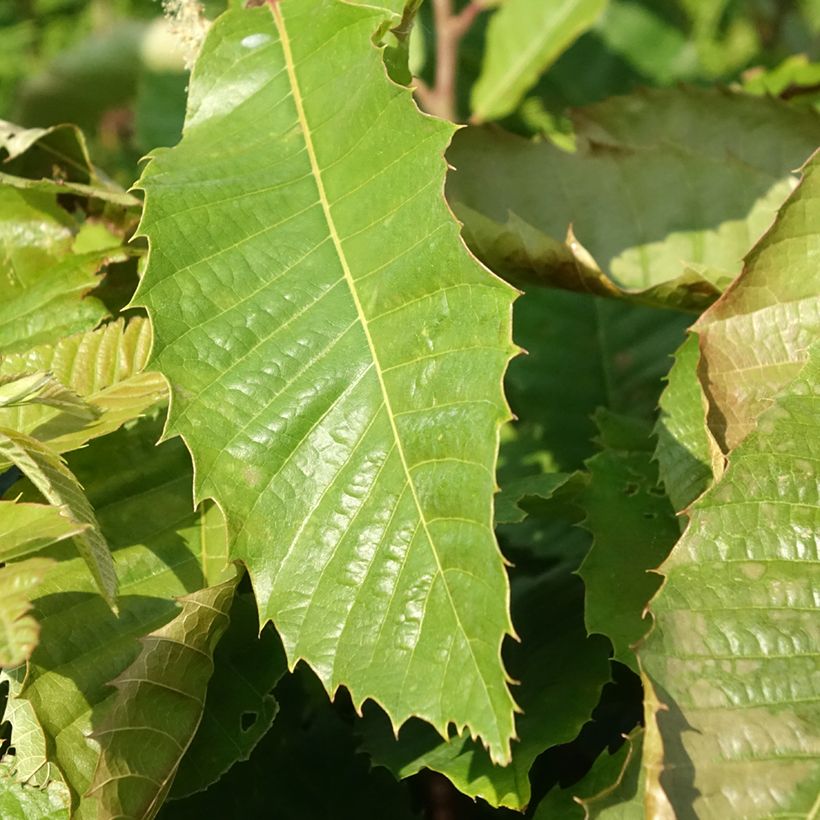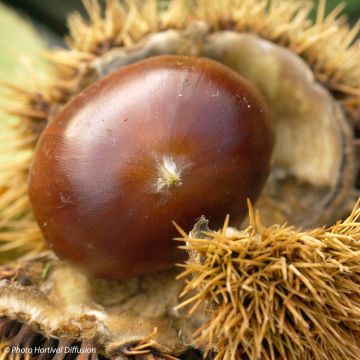

Castanea sativa Marsol - Chestnut
Castanea sativa Marsol - Chestnut
Castanea sativa Marsol
Sweet Chestnut, Spanish Chestnut
Special offer!
Receive a €20 voucher for any order over €90 (excluding delivery costs, credit notes, and plastic-free options)!
1- Add your favorite plants to your cart.
2- Once you have reached €90, confirm your order (you can even choose the delivery date!).
3- As soon as your order is shipped, you will receive an email containing your voucher code, valid for 3 months (90 days).
Your voucher is unique and can only be used once, for any order with a minimum value of €20, excluding delivery costs.
Can be combined with other current offers, non-divisible and non-refundable.
Home or relay delivery (depending on size and destination)
Schedule delivery date,
and select date in basket
This plant carries a 6 months recovery warranty
More information
We guarantee the quality of our plants for a full growing cycle, and will replace at our expense any plant that fails to recover under normal climatic and planting conditions.
Description
The 'Marsol' Chestnut Tree (In Vitro), with its Latin name Castanea sativa, is a majestic tree of great size. This INRA creation results from natural hybridisation between a European chestnut tree (Castanea sativa) and a Japanese chestnut tree (Castanea crénata). It has the advantage of being highly resistant to leaf rust and canker. However, it is susceptible to chestnut gall wasps. The flowering, which is melliferous, is followed by the formation of large-sized chestnuts with a shiny mahogany colour and sweet flesh. They are harvested in October and store well. The chestnut, considered a starchy food, can be used in various culinary preparations. This 'Marsol' variety requires sunlight to produce tasty fruits and is suitable for cultivation in a warmer climate. It prefers acidic soil (without limestone) that is well-drained.
Originally from the Caucasus and introduced to Western Europe by the Romans, the Chestnut Tree is very common in the southern and southwestern regions of France and Corsica. Despite its good hardiness, it can be sensitive to late frosts, which hinder the proper development of buds that sprout too early in spring. This tree belongs to the Fagaceae family. It can reach 20 to 30 metres high and can live for over 1000 years. Its lanceolate and toothed leaves, 15 to 25 cm long, are dark green and shiny on the upper side and matte green on the underside, with prominent veins. The foliage takes on autumnal colours ranging from yellow to reddish-brown before falling. The chestnut tree is monoecious; flowering occurs in June-July, with female flowers grouped in cups and male flowers grouped in long cylindrical catkins of golden yellow. Fertilisation is carried out by wind and insects, especially bees that gather nectar. Then, the fruits, inserted in pairs or threes, develop in a spiky shell and reach maturity in September-October. The fruits, 2 to 3 cm in diameter, are commonly called chestnuts or chestnuts. They should not be confused with the fruits of the Horse Chestnut tree (Aesculus hippocastanum), which are not edible. A Chestnut Tree produces 70 to 100 kg of chestnuts per year. When ripe, the fruits fall to the ground, making them easy to harvest. It is advisable to wear protective gloves to remove the chestnuts from their shell. The chestnut tree belongs to nuts like almonds, hazelnuts, walnuts, and pecans.
The 'Marsol' Chestnut Tree is a variety of medium vigour, semi-early to semi-late, and bears fruit quickly (3 to 4 years). This variety is compatible with all others to ensure pollination. In early October, it produces large-sized chestnuts (20 to 25 grams) with a mahogany colour, triangular to elliptical-triangular shape, floury and sweet flesh, and a woody flavour. They are consumed cooked and are very easy to peel. They should be kept in a dry and well-ventilated place to store them. Chestnuts are high in calories and rich in carbohydrates, vitamin B, and fibre, mainly containing gluten-free proteins. They can be roasted in a perforated pan for shared pleasure by the fireside. When cooked, they can be enjoyed plain, in soups and veloutés. In sweet preparations, they can be used to make chestnut cream or candied chestnuts. As chestnut jam, they are ideal for spreading on a crepe or sweetening yoghurt. Blanched, candied, or braised, well-peeled chestnuts are a pleasant accompaniment to savoury dishes. When combined with wheat flour, chestnut flour can be used to make bread or cakes; when combined with rice or corn flour, it produces a gluten-free dough.
Castanea sativa 'Marsol' is a large tree suitable for spacious gardens, large orchards, or parks. Bees highly appreciate the chestnut tree's flowering, as it produces honey rich in vitamins B and C, minerals, and trace elements (iron, potassium, magnesium, etc.). This honey, rich in tannins, does not crystallise because it is low in acidity.
The 'Marsol' Chestnut Tree that we sell is produced in vitro, a valuable technique for preserving genetic material and multiplying plants in trees that are often prone to diseases.
Report an error about the product description
Castanea sativa Marsol - Chestnut in pictures


Plant habit
Fruit
Flowering
Foliage
Botanical data
Castanea
sativa
Marsol
Fagaceae
Sweet Chestnut, Spanish Chestnut
Cultivar or hybrid
Other Chestnut trees
View all →Planting and care
Plant the Castanea sativa Marsol in well-drained, slightly acidic soil, not limestone. The planting hole should be much wider than the subject you are planting. Choose the location carefully, as the chestnut tree dislikes being transplanted. Do not bury the base of the trunk. Water it generously at the beginning to promote establishment. Pruning should be light, but remove the lower branches gradually to allow for passage underneath when it is mature. Avoid pruning branches that are too thick. The harvest takes place in October, split the fallen burrs on the ground by tapping them with a stick or open them with very thick gloves to extract the chestnuts.
Planting period
Intended location
Care
This item has not been reviewed yet - be the first to leave a review about it.
Haven't found what you were looking for?
Hardiness is the lowest winter temperature a plant can endure without suffering serious damage or even dying. However, hardiness is affected by location (a sheltered area, such as a patio), protection (winter cover) and soil type (hardiness is improved by well-drained soil).

Photo Sharing Terms & Conditions
In order to encourage gardeners to interact and share their experiences, Promesse de fleurs offers various media enabling content to be uploaded onto its Site - in particular via the ‘Photo sharing’ module.
The User agrees to refrain from:
- Posting any content that is illegal, prejudicial, insulting, racist, inciteful to hatred, revisionist, contrary to public decency, that infringes on privacy or on the privacy rights of third parties, in particular the publicity rights of persons and goods, intellectual property rights, or the right to privacy.
- Submitting content on behalf of a third party;
- Impersonate the identity of a third party and/or publish any personal information about a third party;
In general, the User undertakes to refrain from any unethical behaviour.
All Content (in particular text, comments, files, images, photos, videos, creative works, etc.), which may be subject to property or intellectual property rights, image or other private rights, shall remain the property of the User, subject to the limited rights granted by the terms of the licence granted by Promesse de fleurs as stated below. Users are at liberty to publish or not to publish such Content on the Site, notably via the ‘Photo Sharing’ facility, and accept that this Content shall be made public and freely accessible, notably on the Internet.
Users further acknowledge, undertake to have ,and guarantee that they hold all necessary rights and permissions to publish such material on the Site, in particular with regard to the legislation in force pertaining to any privacy, property, intellectual property, image, or contractual rights, or rights of any other nature. By publishing such Content on the Site, Users acknowledge accepting full liability as publishers of the Content within the meaning of the law, and grant Promesse de fleurs, free of charge, an inclusive, worldwide licence for the said Content for the entire duration of its publication, including all reproduction, representation, up/downloading, displaying, performing, transmission, and storage rights.
Users also grant permission for their name to be linked to the Content and accept that this link may not always be made available.
By engaging in posting material, Users consent to their Content becoming automatically accessible on the Internet, in particular on other sites and/or blogs and/or web pages of the Promesse de fleurs site, including in particular social pages and the Promesse de fleurs catalogue.
Users may secure the removal of entrusted content free of charge by issuing a simple request via our contact form.
The flowering period indicated on our website applies to countries and regions located in USDA zone 8 (France, the United Kingdom, Ireland, the Netherlands, etc.)
It will vary according to where you live:
- In zones 9 to 10 (Italy, Spain, Greece, etc.), flowering will occur about 2 to 4 weeks earlier.
- In zones 6 to 7 (Germany, Poland, Slovenia, and lower mountainous regions), flowering will be delayed by 2 to 3 weeks.
- In zone 5 (Central Europe, Scandinavia), blooming will be delayed by 3 to 5 weeks.
In temperate climates, pruning of spring-flowering shrubs (forsythia, spireas, etc.) should be done just after flowering.
Pruning of summer-flowering shrubs (Indian Lilac, Perovskia, etc.) can be done in winter or spring.
In cold regions as well as with frost-sensitive plants, avoid pruning too early when severe frosts may still occur.
The planting period indicated on our website applies to countries and regions located in USDA zone 8 (France, United Kingdom, Ireland, Netherlands).
It will vary according to where you live:
- In Mediterranean zones (Marseille, Madrid, Milan, etc.), autumn and winter are the best planting periods.
- In continental zones (Strasbourg, Munich, Vienna, etc.), delay planting by 2 to 3 weeks in spring and bring it forward by 2 to 4 weeks in autumn.
- In mountainous regions (the Alps, Pyrenees, Carpathians, etc.), it is best to plant in late spring (May-June) or late summer (August-September).
The harvesting period indicated on our website applies to countries and regions in USDA zone 8 (France, England, Ireland, the Netherlands).
In colder areas (Scandinavia, Poland, Austria...) fruit and vegetable harvests are likely to be delayed by 3-4 weeks.
In warmer areas (Italy, Spain, Greece, etc.), harvesting will probably take place earlier, depending on weather conditions.
The sowing periods indicated on our website apply to countries and regions within USDA Zone 8 (France, UK, Ireland, Netherlands).
In colder areas (Scandinavia, Poland, Austria...), delay any outdoor sowing by 3-4 weeks, or sow under glass.
In warmer climes (Italy, Spain, Greece, etc.), bring outdoor sowing forward by a few weeks.































